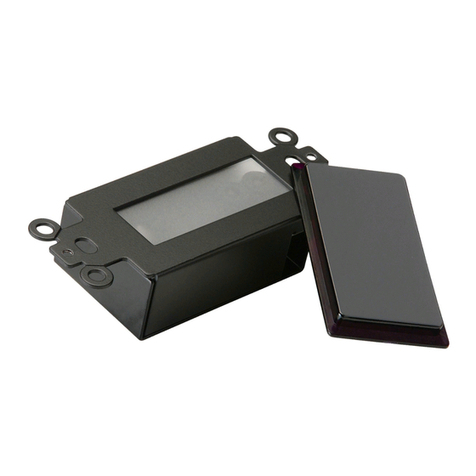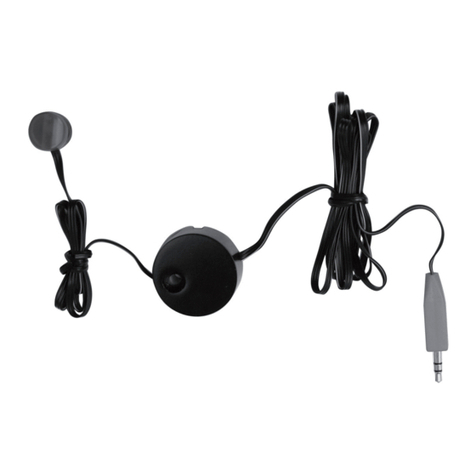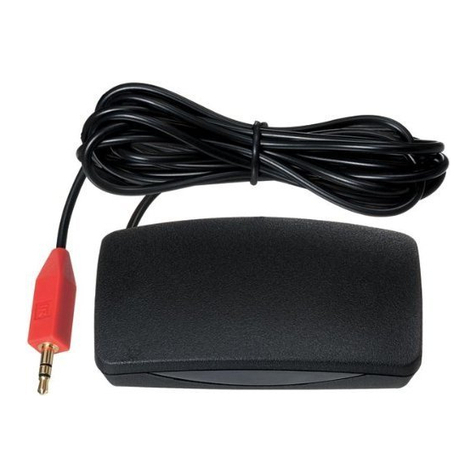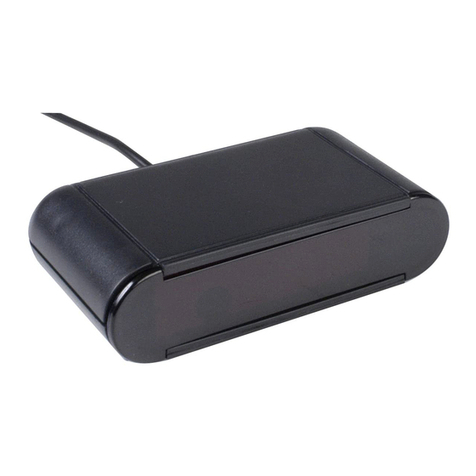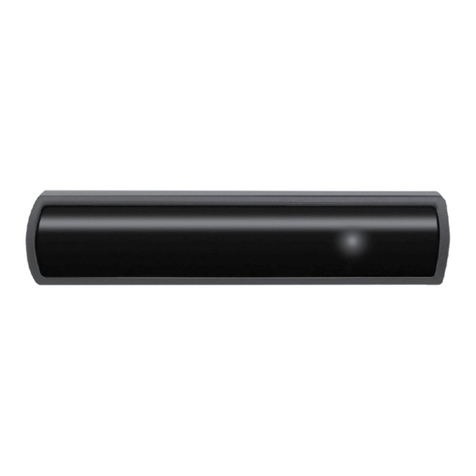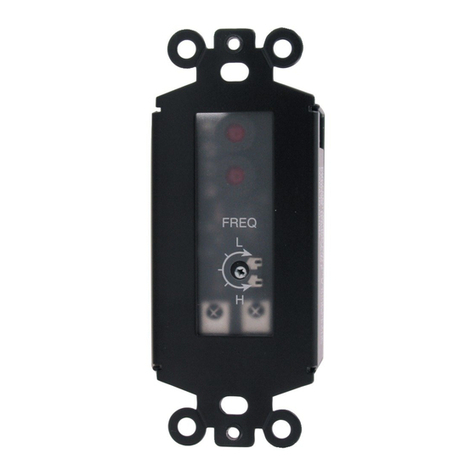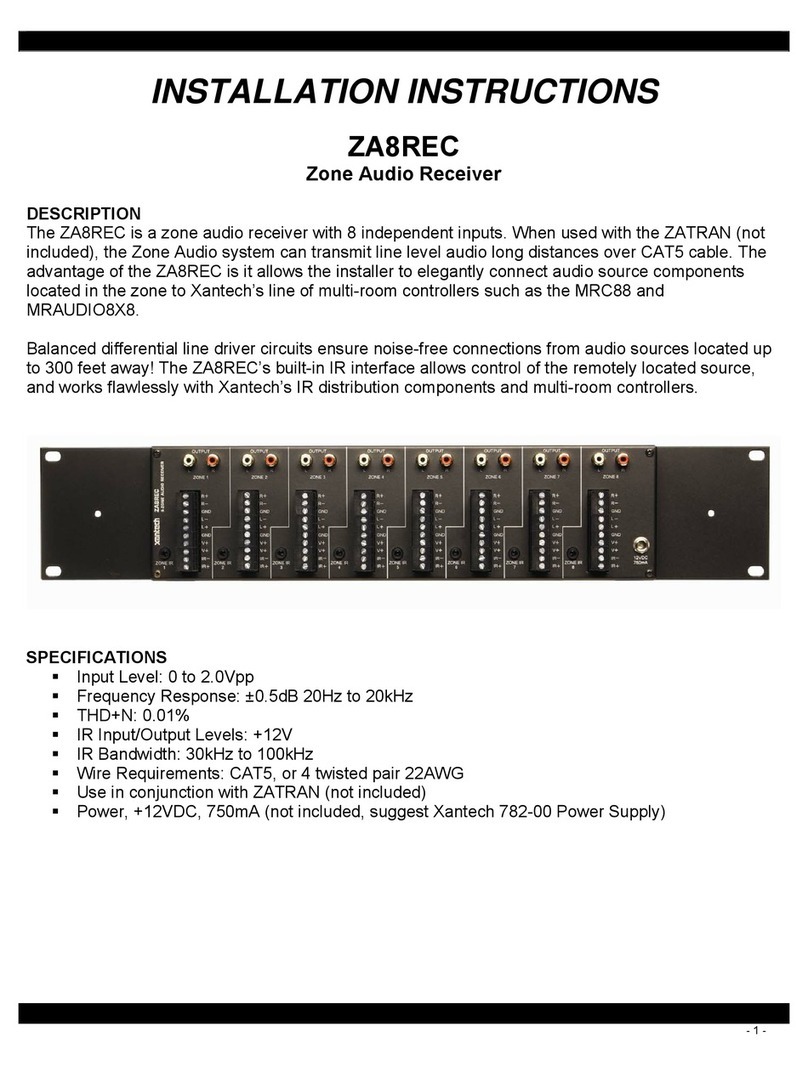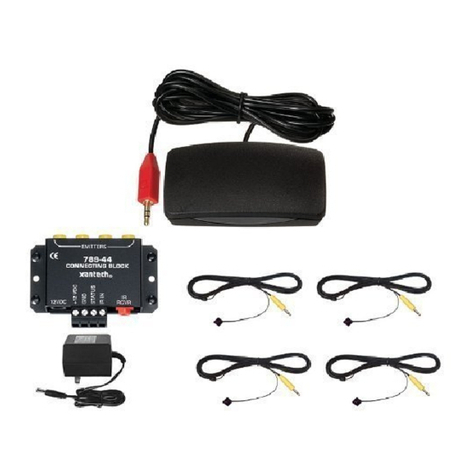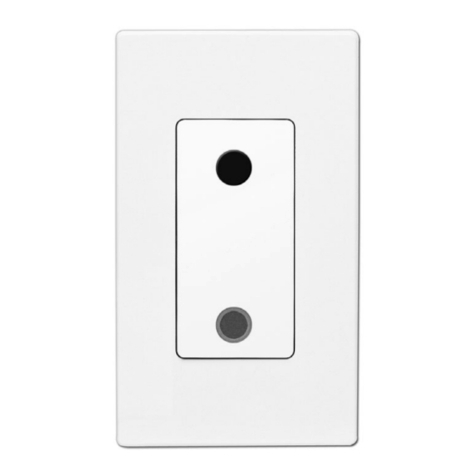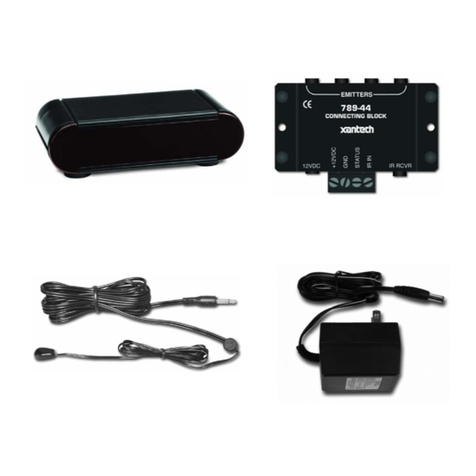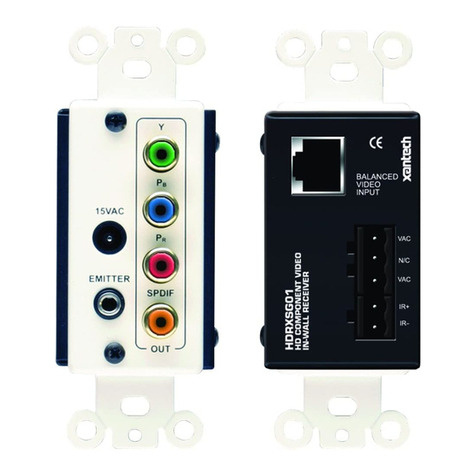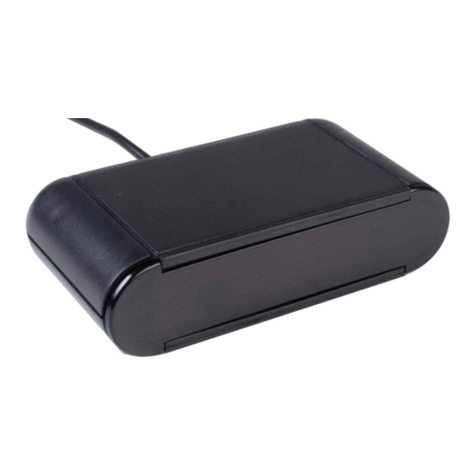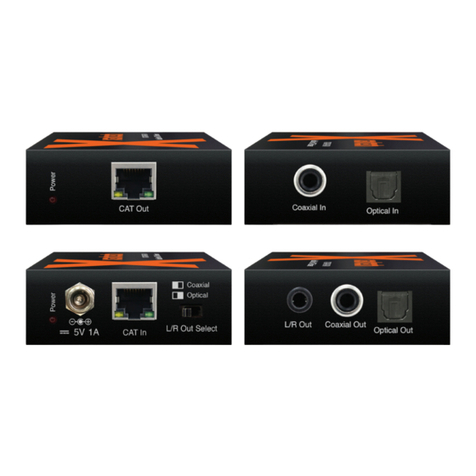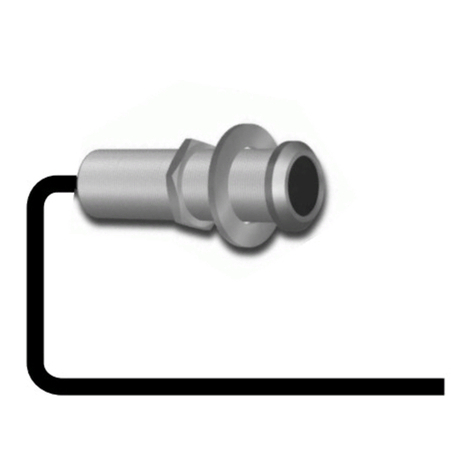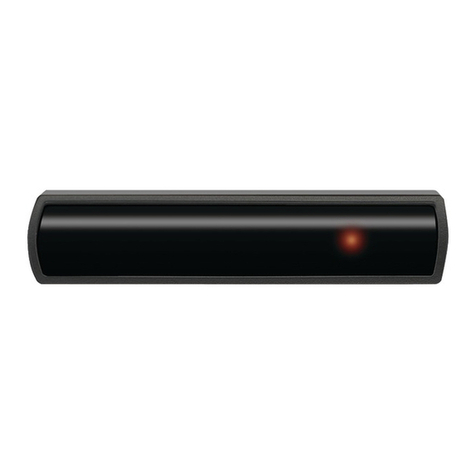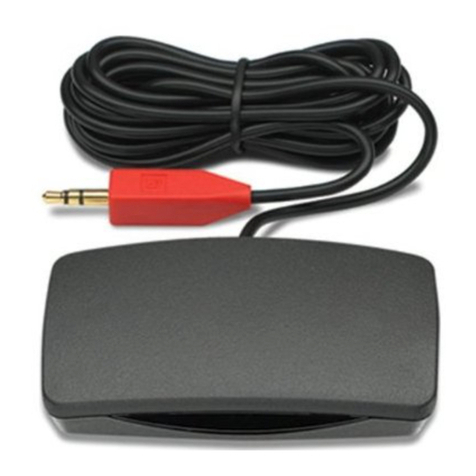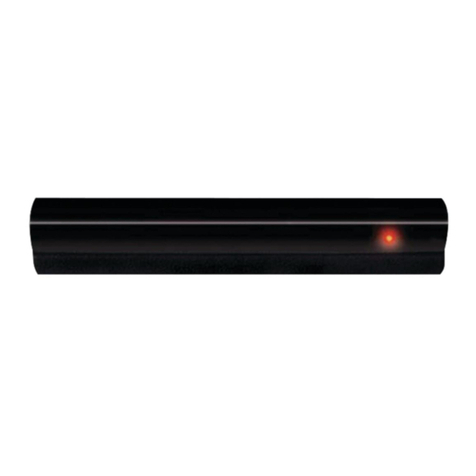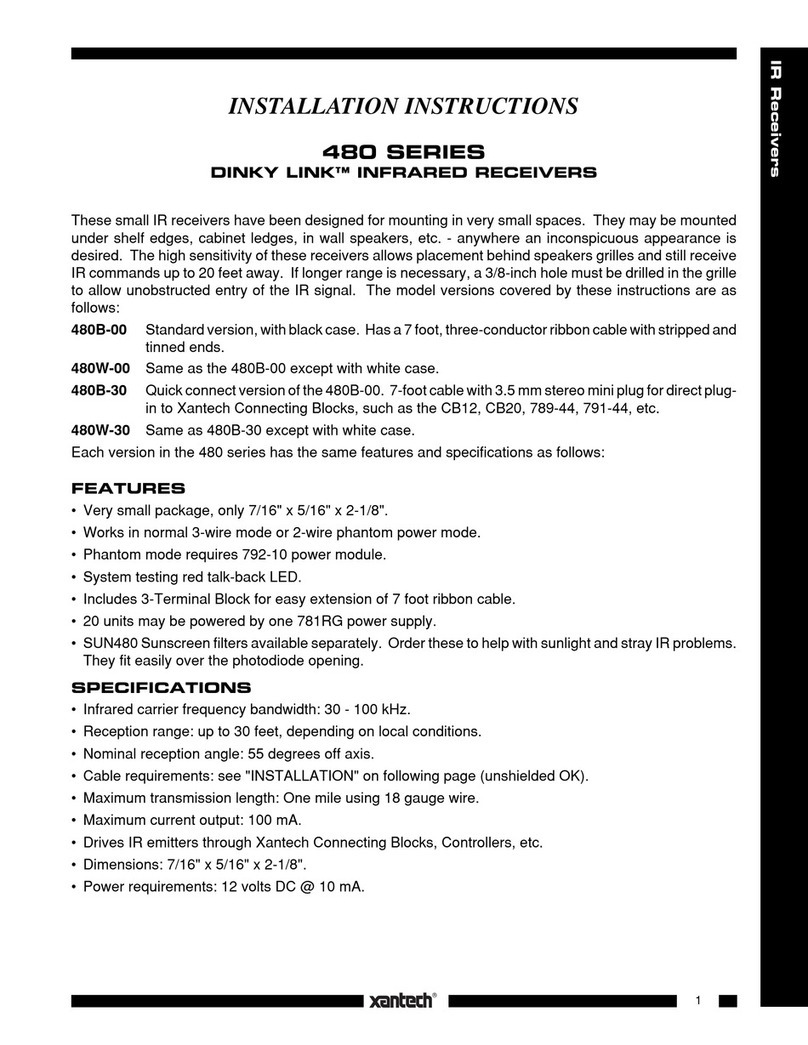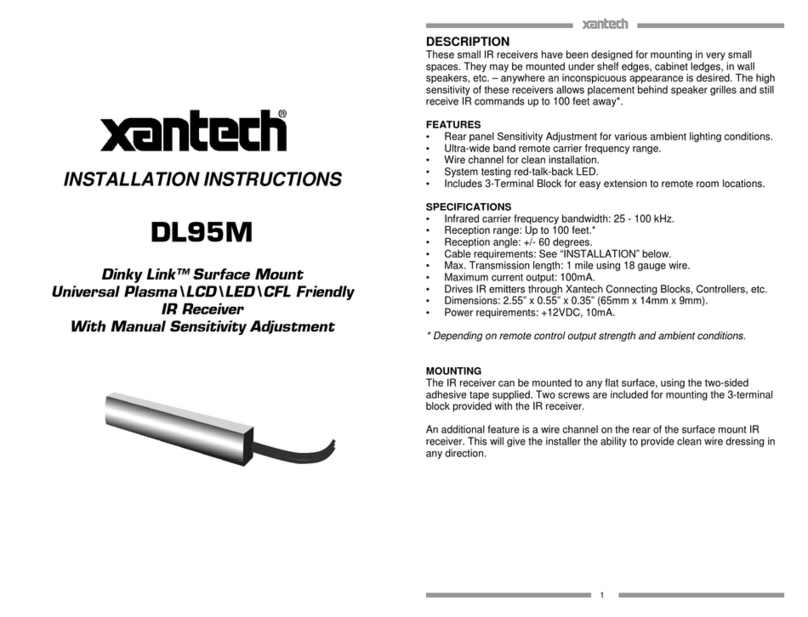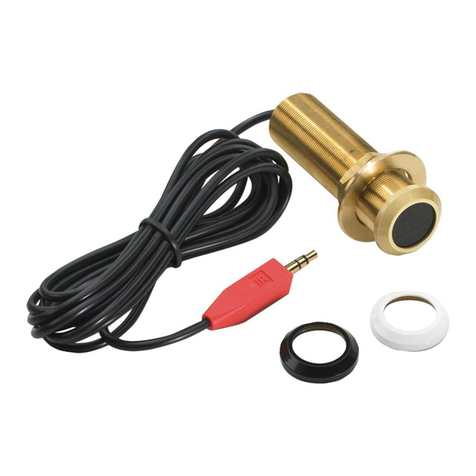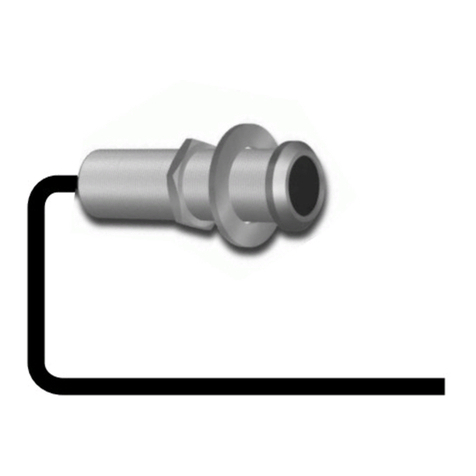
TROUBLE SHOOTING:
1. Perhaps the most common problem you may encounter is stray IR
(infrared) or RF (radio frequency) interference preventing proper
operation of the controlled equipment.
•Fluorescent, Compact Fluorescent, Neon or Halogen lights,
Neon Art, and light dimmers.
•Direct of reflected sunlight.
•Infrared security sensors (active types).
•RF radiation from TV sets that may be close to the Hidden
Link IR Receiver.
2. You can confirm the source of the interference by temporarily turning
off TV sets, isolating the Hidden Link IR Receiver from all sunlight
and turning off all lights, light dimmers and Infrared security systems.
Then check to see if the Hidden Link IR Receiver operates the
component.
•Sometimes interference will cause the red Talk-Back LED on
the front of the Hidden Link IR Receiver to blink dimly,
intermittently, or continuously.
•The Talk-Back Led should only blink when you are sending
infrared commands to the Hidden Link IR receiver from a
remote control.
•It may be necessary to move either the interfering source of
the Hidden Link IR Receiver to achieve proper operation.
3. If the Talk-Back LED or the 286D Emitters do not blink when you are
sending IR commands to the Hidden Link IR Receiver from a remote
control, check the following:
•Make sure the power supply is plugged securely into a live
AC electrical outlet.
•Be sure the stereo mini plug of the Hidden Link IR Receiver
is plugged into the “IR RCVR” jack on the CB12 Connecting
Block, not into the “OUT” jack.
•Check to see that all the mini plugs are properly seated into
the mini jacks on the CB12 Connecting Block.
4. If the 286D Emitters blink, but the component does not respond,
reposition the 286D Emitter(s). They may not be located directly over
the component’s infrared receiving “window”. Consul the owner’s
manual of the unit or the manufacturer for the exact location of the
infrared “window”.
Limited Warranty
Xantech® warrants its products to be free of defects in materials or workmanship. This is a
Limited Lifetime warranty from the date of purchase by the original consumer. Any products
returned to Xantech and found to be defective by Xantech within the warranty period will be
repaired or replaced, at Xantech’s option, at no charge. Xantech will not be responsible for the
actual cost of installation or removal of the product, nor for any incidental or consequential
damages. Some states do not allow the exclusion or limitation of incidental or consequential
damages, so the above limitation may not apply to you. This warranty gives you specific legal
rights. You may have additional legal rights that vary from state to state.
Xantech Corporation
13100 Telfair Ave. 2F, Sylmar CA 91342 | Xantech.com
Installation Instructions, 49085D © 2008 Xantech Corporation
Document # 08905191A
This document is copyright protected. No part of this manual may be copied or reproduced in
any form without prior written consent from Xantech Corporation. Xantech Corporation shall not
be liable for operational, technical, or editorial errors/omissions made in this document.
